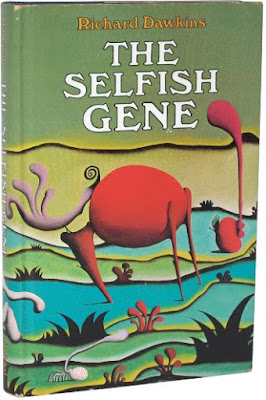 BiOpinionated
BiOpinionated is a blog written by a molecular biologist named Nils Reinton. He tries to see every side of an argument but there are times when this attempt goes astray.
The "debate" over junk DNA is an example. Here's how Nils responed to claims by Ryan Gregory and me that most of our genome is junk [
How to have your cake, eat it, and then complain].
First: State that most of our genome is junk.
Second: When more and more promoters, enhancers, repressors and other regulatory elements are discovered, claim that this of course was not included in the definition of “most of the genome”. The perfect excuse because it means you’ll never be wrong.
Last: Complain when the press does not understand that “most of our DNA” actually meant “much of our DNA , but with a lot of exceptions” and that science reporters don’t intuitively know which exceptions these are.
Post written using the zpen in dire agony over extremely poor science communication from the same persons who most eagerly criticize science communication from others.[see the original article for links - LAM]
Oh dear. There's so much wrong with the logic of this posting that I hardly know where to begin.
Nils is mostly upset about a recent posting on
Genomicron:
The Junk DNA myth strikes again (next up: media hype). This isn't very complicated so let me give you the short version.
Most of our genome is junk. That does not mean that
all of our genome is junk and it certainly never meant (among intelligent scientists) that all of our
non-coding DNA is junk. Here's a short list of non-coding DNA that is absolutely essential in our genome: all genes that produce functional RNAs instead of proteins; all regulatory sequences including enhancers; sequences that control splicing and other RNA processing events such as capping and polyadenylation; some 5′-leaders and 3′-tails of mRNA; chromatin domain markers (regulatory); scaffold attachment sites (SARs); some recombination hotspots; origins of replication; centromeres; telomeres.
Ryan was complaining about a paper that's about to be published in
Molecular Biology and Evolution. The authors say this in their abstract.
Protein-coding sequences make up only about 1% of the mammalian genome. Much of the remaining 99% has been long assumed to be junk DNA, with little or no functional significance.
I agree with Ryan Gregory that this is extremely misleading. It implies that there are legitimate scientists who think that all non-coding DNA is junk. It would be far better to say something like this ...
Genes that encode proteins, and other genes, make up only a few percent of our genome. If you add in all of the other DNA sequences that are known to be essential you still can only account for no more than 5% of our genome. Most of the rest is thought to be junk DNA with no biological function. There are no respectable scientists who think that none of it will ever be shown to have a function but the general consensus among the defenders of junk DNA is that the vast majority of these DNA sequences, consisting mostly of defective transposons and pseudogenes, will turn out to have no function.
The authors of the paper go on to present evidence that about 5.4% of
non-coding DNA has a function.
Big deal. That's not much more than what the textbooks have been saying for several decades.
Nils, there's an interesting debate going on about the amount of junk DNA in our genome. You're welcome to participate but please make sure you understand the issue and, please, don't spread false information. When we say that most of our genome is junk that does not mean that some of what we now consider to be junk DNA won't turn out to have a function. We're not that stupid—please don't imply that we are.
What we're saying is that the vast majority of DNA sequence in our genome is junk. I think the amount of junk is going to be >90%. That still leaves room for discovering a function for about twice as much DNA as we already know to be functional.
Get back to me when someone publishes solid evidence that more than 10% of our genome is essential.
 This is part 11 of my review of The Myth of Junk DNA. For a list of other postings on this topic see the links in Genomes & Junk DNA in the "theme box" below or in the sidebar under "Themes."
This is part 11 of my review of The Myth of Junk DNA. For a list of other postings on this topic see the links in Genomes & Junk DNA in the "theme box" below or in the sidebar under "Themes." 
















